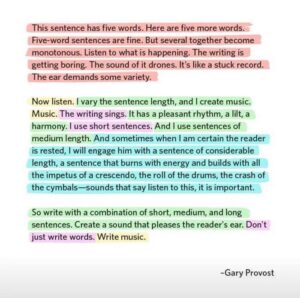Climbing Out of the Uncanny AI Valley

You're scrolling along, minding your own business, when suddenly you stumble upon a clunky turn of phrase or an odd visual that makes you feel... weird. It's like watching a movie that uses CGI for stunts and suddenly something's just off about the main character. You don't know why but not only does it feel fake, it's actually giving you the heebie-jeebies. Welcome to the uncanny valley of content. Today, we're diving headfirst into why some AI-created content passes our eyeball test, and others feel more like a invisible speck of dust in your cornea.
The theory of the uncanny valley is a fascinating concept in robotics and computer animation that helps explain our emotional response to human-like entities. Coined by Japanese roboticist Masahiro Mori in 1970, this theory suggests that as robots or digital characters become more human-like, our affinity towards them increases—but only up to a point.

Our brains are highly attuned to human features and behavior, so when we encounter something that's close to human, but not exactly right, it sets off alarm bells.
Uncanny examples
- The Mummy Returns (2001) - The fact that the movie also included live action scenes with Dwayne 'The Rock" Johnson made his transformation into the Scorpion King using CGI so obviously, hilariously bad.
- The Polar Express (2004) - This animated film used motion capture technology to create human characters. Many viewers found the characters' appearances unsettling.
- Medal of Honor - As video game graphics have improved, some hyper-realistic game characters have crossed into uncanny valley territory, appearing almost, but not quite, human.



Uncanny text
The concept of the uncanny valley extends beyond visual representations. In the realm of AI-generated content, text that's almost human-like but lacks certain nuances can create a similar effect. This is why obviously AI-written content can feel "off" to readers.
If you've ever tried to penetrate the gobbledygook of corporate mission statements, it's the same kind of soulless mush that you can read but still not get closer to any actual meaning. Just like with uncanny visuals, our brains first say something like, "huh?", and then, "this doesn't feel human."
The problem with impersonation
Machines do a great job of writing straightforward, factual text. For a lot of applications, that can work just fine. But for others, the style of writing can feel a little wooden and lifeless. For example here's an AI's description of Venice without any attempt at humanization.
Venice is a beautiful city known for its canals and historic architecture. Visitors can enjoy gondola rides, visit St. Mark's Basilica, and explore the Doge's Palace. The city offers delicious Italian cuisine and unique shopping experiences. It is recommended to visit during the shoulder season to avoid crowds and high prices.
Nothing wrong with that, other that feeling a little flat. The uncanny issues start when you ask AI to attempt to infuse some personality to it. Here's another version of AI describing Venice, this time with instructions to impersonate my own writing style:
Picture this: You're cruising down a Venetian canal, gelato in hand, desperately trying not to recreate the "I'm flying, Jack!" scene from Titanic. That's Venice for you – a city so ridiculously charming, it makes you want to toss your return ticket into the Grand Canal. Sure, you could tick off the touristy boxes like gawking at St. Mark's or pretending to understand art at the Doge's Palace. But the real magic? Getting hopelessly lost in the labyrinthine alleys, stumbling upon a tiny trattoria, and realizing that carbs don't count when you're on vacation.
Now the text has some more interesting elements, but it reads as overly syrupy and forced for this author's taste. This project will require some more back and forth with the AI, and editing oversight, to develop the copy into something more enjoyable to read.
AI giveaways in text
What are some of the elements of uncanny valley writing that can ruin otherwise useful content?
- Overuse of Synonyms and Varied Sentence Structures AI often tries too hard to avoid repetition, resulting in unnatural language. Example: "The canine approached the feline. The dog walked towards the cat. The hound meandered in the direction of the domesticated feline."
- Lack of Genuine Personal Anecdotes AI struggles to create authentic, specific personal experiences. Example: "I remember a time when I experienced joy. It was a pleasant day and I felt happy. Many people enjoy such moments in their lives."
- Overly Formal or Consistently Even Tone AI can struggle with maintaining an appropriate level of formality or injecting personality. Example: "Dude, the party was lit. It was attended by numerous individuals who engaged in social interactions. The auditory stimulation was provided by a disc jockey."
- Generic, Broad Statements Without Specific Details AI often resorts to vague, universally applicable statements. Example: "Exercise is beneficial for health. Many people enjoy various forms of physical activity. It is important to stay active."
- Repetitive Structure Across Paragraphs AI often falls into patterns, using similar paragraph structures throughout a piece. Example: "Paragraph 1: [Topic sentence]. [Explanation]. [Example]. [Concluding sentence]. Paragraph 2: [Topic sentence]. [Explanation]. [Example]. [Concluding sentence]. Paragraph 3: [Topic sentence]. [Explanation]. [Example]. [Concluding sentence]."
The antidote
We've looked at a lot of bad writing and visuals. What does good output look like?
Ann Handley recently wrote about this in her excellent newsletter Total Annarchy. In one of her tips, she recommends implementing a recognizable, unique writing style.
"I do this a lot; it's kind of my thing. I toss an archaic or old-timey or unnecessarily long word like a hand grenade in the middle of a sentence. Harbinger. Nincompoop. Shenanigans." "Why? They're a little weird. We rarely use them in speaking. So they stand out."
Likewise, David Perell has become an expert at helping non-writers learn to write better. He has built up an incredible volume of practical resources for writing, from process to philosophic ideals. Why put in so much work at becoming a better writer? Because it shows up in the final product. One of his many useful tips involves being intentional about sentence length.
"Great writing is like a dance, and words are the music that create the atmosphere. The easiest way to add rhythm to your writing is to vary sentence length. Short sentences speed things up, and long sentences slooooooowwwwww things down."

Avoiding the valley
To improve the results, give the AI examples of the style you're aiming for, to help guide the output.
Example prompt: "Write a product review for a smartphone in the style of MKBHD (Marques Brownlee). Here's an example of his style: [insert a paragraph from one of his reviews]. Now, write a review for the [specific smartphone model] using this style."
To take this further, upload material to your model's storage to enable RAG (Retrieval-Augmented Generation.) For example, Anthropic's Claude AI can utilize Projects, where you can upload example writing, style guides and other guidance for your output.
Remember too that you aren't likely to get a perfect result right out of the box. Expect to go through a few rounds of editing with your writing partner, and provide positive and negative feedback to get to better working copy. And don't get lazy. It's not reasonable to expect perfect, copy-and-paste text without any adjustments. Enjoy AI's ability to offer a place to start, or inspiration for your work and then take on your own ownership to make it yours.

You can get impressive results if you're willing to provide these additional signals, and to have a little patience, to avoid the uncanny valley of AI generated content.
